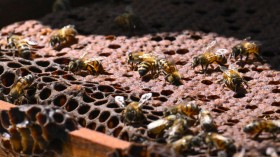NASA's Cassini-Huygens mission lead by the Cassini spacecraft has been observing Saturn and the region around it since 2004. And now that the spacecraft is almost out of fuel, it is performing the last parts of its mission, the 'ring-grazing' dives into Saturn's ring. The spacecraft already completed the first of its final orbits and had already beamed back the first images from its last orbit.
The team of scientists at NASA is already reviewing the first images sent by Cassini to Earth after completing its new orbit on Saturn's rings. Images of the planet's northern hemisphere were beamed back to Earth and they are showing the perplexing hexagon-shaped weather activity on top of Saturn, known as jet streams.
Since Cassini reached the region, the hexagonal shape of the northern hemisphere of Saturn was discovered. And now that the spacecraft is supposed to orbit nearer the planet, Cassini is expected to collect more angles and more data about Saturn.
Saturn's intriguing hexagon-shaped jet stream, and more new views from our latest mission phase https://t.co/bwartuUE0T pic.twitter.com/w85kH1D90Y
— CassiniSaturn (@CassiniSaturn) December 7, 2016
Cassini recently began its 'ring-grazing' orbits that will dive near the planet's rings. This will be the first time this orbit will be attempted giving scientists an opportunity to closely study Saturn's rings and the 'moonlets' hiding in the planet's rings making the mission all the more important for scientists. The next orbit will be completed in Dec. 11, according to Earthsky.org.
"The Cassini team carefully designed the finale to conduct an extraordinary science investigation before sending the spacecraft into Saturn to protect its potentially habitable moons," a NASA official said in a statement.
The spacecraft will perform 20 ring-grazing orbits that begun last Nov. 30. "This is it, the beginning of the end of our historic exploration of Saturn. Let these images -- and those to come -- remind you that we've lived a bold and daring adventure around the solar system's most magnificent planet," Carolyn Porco, Cassini imaging team lead at Space Science Institute, Boulder in Colorado said in a NASA press release.
This is a bittersweet mission for Cassini since it will provide new information about Saturn's ring but it also signals the end of the Cassini-Huygens mission. After the completion of the ring-grazing orbits, the spacecraft will perform a death dive to Saturn that will mark the conclusion of the mission.
© 2024 NatureWorldNews.com All rights reserved. Do not reproduce without permission.




